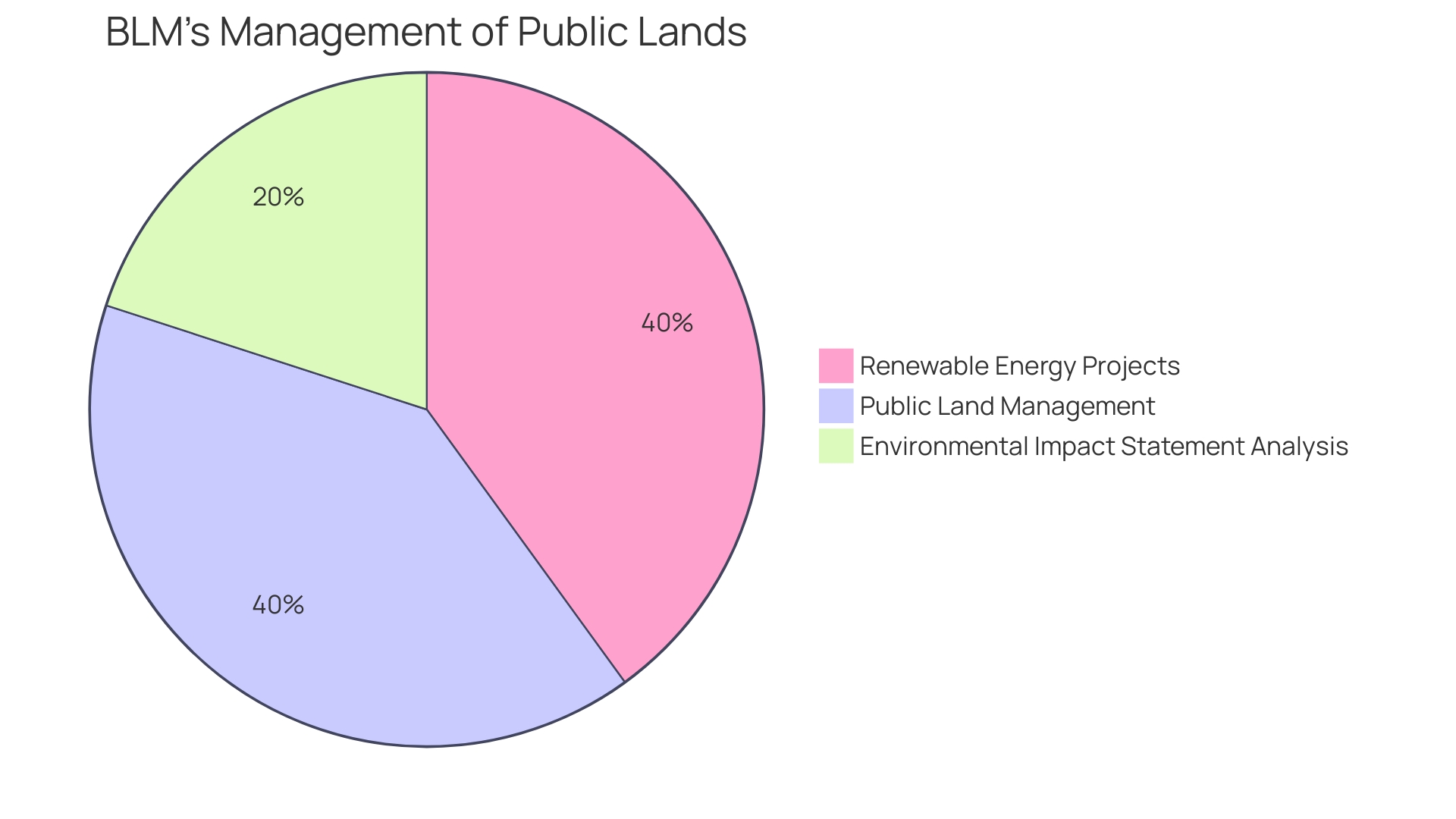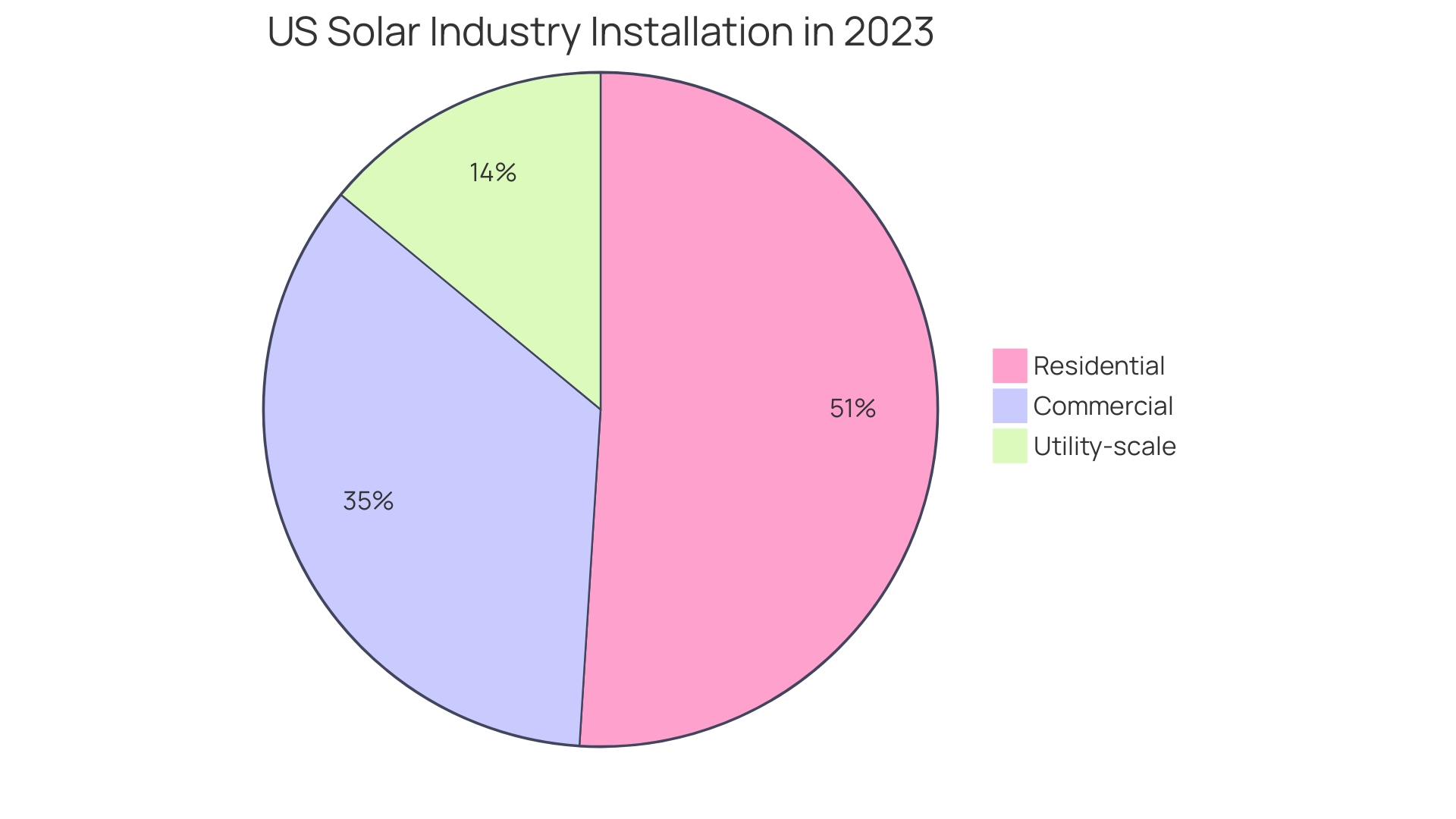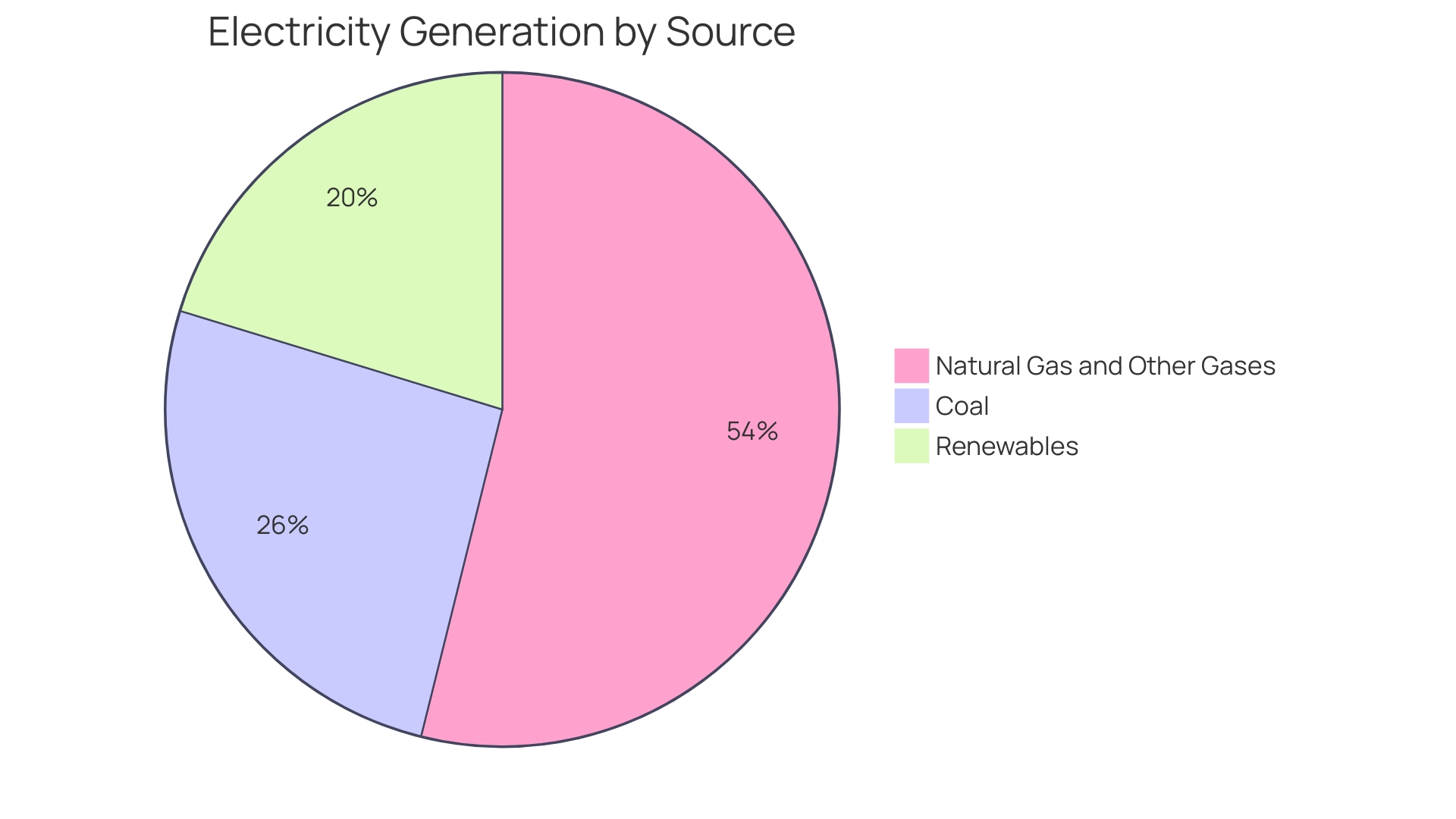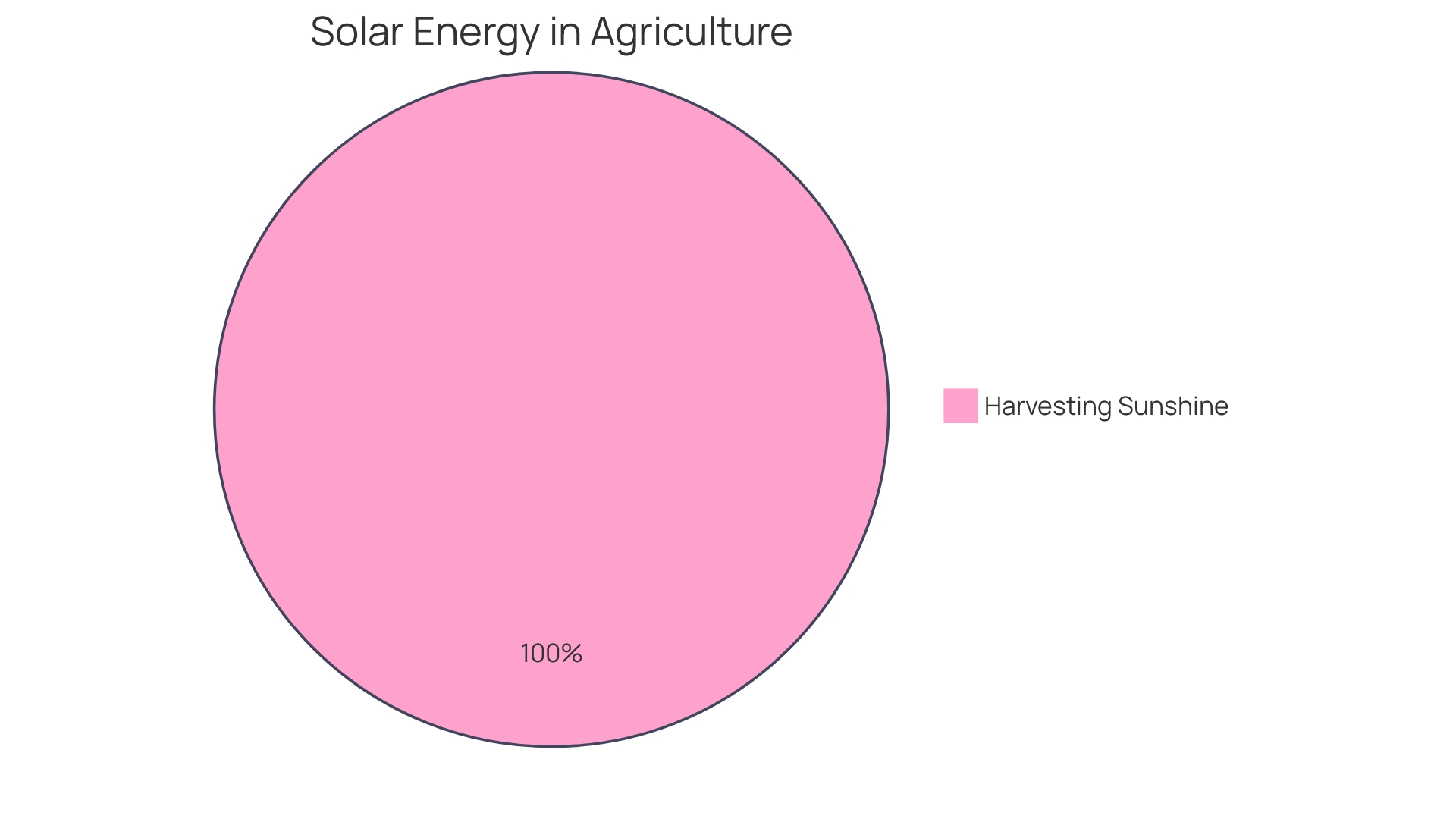Introduction
The Bureau of Land Management (BLM) plays a crucial role in advancing renewable energy on public lands, aligning with the nation's ambitious clean energy goals. With its vast land and mineral estate holdings, the BLM is at the forefront of guiding the development of solar, wind, and geothermal projects while prioritizing environmental sustainability. Under the Energy Act of 2020 and the Biden-Harris administration's objectives, the BLM is processing numerous utility-scale clean energy proposals that could collectively contribute over 37 gigawatts of clean energy to the western United States' power grid.
The strategic planning and transparent approach of the BLM, along with collaboration with industry stakeholders and public input, ensure that renewable energy development is conducted responsibly and with a focus on conservation efforts. This article explores the BLM's role in renewable energy, the national renewable energy strategy, the Renewable Energy Rule, the Western Solar Plan, and the Conservation and Landscape Health Rule, highlighting their key features and expected outcomes. It also showcases successful case studies of renewable energy projects on public lands, demonstrating the positive impact of sustainable energy development on the environment, economy, and local communities.
The Bureau of Land Management's Role in Renewable Energy
The Bureau of Land Management (BLM) is leading the way in utilizing sustainable power sources on the vast areas of public property under its care. This federal agency, part of the U.S. Department of the Interior, is instrumental in guiding the development of renewable energy installations in a way that aligns with ecological sustainability and adherence to environmental regulations. With over 245 million acres of public property and 700 million acres of sub-surface mineral estate, the BLM's mission is multifaceted: to preserve the health, diversity, and productivity of these areas for current and future generations to appreciate.
Under the Energy Act of 2020's mandate, the BLM is a key player in realizing Congress' directive to authorize 25 gigawatts of solar, wind, and geothermal output on public lands by 2025. This commitment dovetails with the Biden-Harris administration's ambitious objective of achieving a carbon pollution-free power sector by 2035. To achieve this objective, the BLM is processing 67 utility-scale onshore proposals that encompass solar, wind, and geothermal projects. These projects are set to collectively contribute over 37 gigawatts of clean power to the western United States' electrical grid, marking a significant step toward the nation's clean energy targets.
The strategic planning of these projects is paramount. The BLM concentrates on areas that have been previously disturbed or are within a 15-mile radius of existing or planned high-voltage transmission lines, ensuring that sustainable power generation is focused in regions that minimize environmental impact and are already prepared for power transmission. Moreover, with over 195 applications for solar and wind development and 97 for site area testing under preliminary review, the BLM is accelerating the transition to sustainable power sources while balancing conservation efforts.
BLM Director Tracy Stone-Manning has highlighted the significance of this equilibrium, emphasizing the revised Western Solar Plan as a 'responsible, pragmatic strategy' that backs the nation's sustainable power objectives without jeopardizing power security. Taking into account feedback from industry stakeholders such as the Solar Energy Industries Association (SEIA), the BLM's approach demonstrates a focused endeavor to enhance public access for solar and storage development while upholding its conservation mandate. The SEIA has observed the favorable measures taken by the BLM in response to the industry's feedback, emphasizing the opening of 31 million acres to sustainable power generation.
As the BLM navigates through the myriad of applications and project proposals, it continues to seek public input to refine its environmental impact analyses and explore potential alternatives. Such openness and cooperation are essential to the BLM's goal, guaranteeing that the advancement of sustainable power resources on public territories is carried out with carefulness and anticipation for lasting advancement.

The BLM National Renewable Energy Strategy
The Bureau of Land Management (BLM) has implemented a National Strategy for Sustainable Power to guide the future of clean power on public territories. With an impressive track record of managing over 245 million acres across 12 western states, including Alaska, and administering 700 million acres of sub-surface mineral estate, the BLM is committed to the health, diversity, and productivity of the nation's public lands. This strategy is not only a roadmap for achieving objectives but also adheres to the Biden-Harris administration's ambitious goal to have a carbon pollution-free power sector by 2035 and Congress' directive in the Energy Act of 2020 to permit 25 gigawatts of solar, wind, and geothermal production by 2025.
Currently, the BLM is reviewing applications for 67 large-scale clean power projects that, once finished, are predicted to provide more than 37 gigawatts of sustainable power to the western grid. This is complemented by the review of over 195 solar and wind development applications and another 97 for site area testing. This coordinated endeavor demonstrates a well-rounded strategy for development, giving priority to the effective utilization of resources and limited ecological effects while engaging the public through the BLM's ePlanning website, where stakeholders can offer input on the Draft Programmatic Environmental Impact Statement (EIS).
The BLM's strategic approach has been commended by industry experts, with BLM Director Tracy Stone-Manning and Ben Norris, vice president of Regulatory Affairs at the Solar Energy Industries Association (SEIA), recognizing the progress made towards sustainable development on federal territories. The choice to potentially unlock 31 million acres for development, particularly regions within 15 miles of current or planned high-voltage transmission lines or previously disturbed territories, demonstrates a dedication to a practical and accountable resource approach.
The updated strategy is a testament to the BLM's responsiveness to industry feedback, aiming to improve the application process for solar power projects and ensuring that conservation of natural resources goes hand in hand with the deployment of clean technology. By providing a clear framework for sustainable power development, the BLM plays a pivotal role in the nation's transition to a more environmentally friendly future while maintaining the integrity of public lands for generations to come.
The Renewable Energy Rule: Facilitating Solar and Wind Development
The Bureau of Land Management (BLM) has made a significant advancement in strengthening the development of sustainable power, especially solar and wind projects, on public territories with the introduction of the Rule for Sustainable Power. This regulation has been thoughtfully crafted to ensure a streamlined and transparent process for leasing and permitting while prioritizing environmental sustainability. One of the crucial objectives of this regulation is to support the realization of the Biden-Harris administration's aspiration for a carbon pollution-free power sector by 2035, together with Congressional mandates under the Energy Act of 2020 to facilitate 25 gigawatts of clean power generation on public lands by 2025.
The Rule encompasses rigorous site evaluations, thorough environmental impact assessments, and comprehensive mitigation strategies to safeguard natural resources and wildlife habitats. The BLM's proactive approach involves handling 67 utility-scale clean power projects and evaluating over 195 applications for solar and wind development, alongside 97 applications for site testing, which together could add more than 37 gigawatts of sustainable electricity to the Western grid.
Collaboration is a cornerstone of the Rule for Harnessing Sustainable Resources, as evidenced by the Colorado Coalition for Energy Siting's efforts in harmonizing the siting of sustainable resources with community interests and conservation objectives. The coalition, which includes Audubon Rockies, Clean Air Task Force, and other NGOs, underscores the importance of local government input and state agency engagement to optimize siting and permitting processes.
The BLM's dedication to responsible power generation is further emphasized by its proposal to allocate 31 million acres of federal lands for sustainable projects, which would be strategically situated near high-voltage transmission lines or in previously disturbed areas. This initiative not only aligns with national clean power and security goals but also exemplifies a balanced approach to conservation efforts.
While the United States deals with the negative consequences of climate change, such as severe weather occurrences and the loss of biodiversity, the Renewable Energy Regulation embodies a practical approach to expedite the shift to sustainable power sources, thus playing a role in reducing the impacts of climate change and promoting long-term sustainability for future generations.
Key Features of the Renewable Energy Rule
The Rule for Sustainable Power promotes the implementation of clean power by establishing a structure that encourages creativity and tackles ecological considerations. At the core of this guideline are competitive leasing provisions, which establish a market-driven mechanism where developers compete for the privileges to utilize land for sustainable power projects. This competitive advantage is strengthened by the rule's endorsement of cutting-edge technologies in solar and wind power, which play a key role in improving production efficiency. Moreover, the rule underscores adaptive management practices, necessitating ongoing environmental monitoring and mitigation measures to safeguard ecosystems throughout a project's lifespan.
The vitality of these features is evident in the context of real-world applications. For instance, projects in remote locations, such as the Isfjord Radio station in the Arctic, demonstrate the complexities of installing solar power in challenging environments. Here, the lack of road access requires the transportation of materials through snowmobiles or snow groomers, highlighting the significance of creative solutions and flexible approaches in sustainable power initiatives.
Furthermore, the significance of the Renewable Energy Rule is magnified by recent legislative developments within the EU. The 'Fit for 55' package, aiming to align the EU’s climate and power framework with its 2050 climate neutrality goal and to reduce greenhouse gas emissions by 55% by 2030, highlights a global push for clean power adoption. These legislative modifications, combined with the REPowerEU plan's focused revisions to the sustainable power source directive, mirror a dynamic power landscape where policies like the Renewable Energy Rule are progressively vital.
The effectiveness of such initiatives also depends on the complex network of stakeholders involved in sustainable power projects—ranging from project sponsors to financiers and contractors. Each stakeholder plays a pivotal role, as evidenced by the collaborative efforts in Malawi, where an agri-energy business model was co-developed with local women to address unique challenges in arid regions.
This comprehensive approach to renewable resource land management, which integrates competitive processes, technological innovation, and environmental stewardship, is further validated by the remarkable growth in the U.S. renewable resource sector. The sector's expansion, partly driven by federal tax credits, has not only spurred technology advancements but also facilitated billions in private investments and supported significant job creation.
In summary, the Renewable Energy Rule is evidence of the collective effort needed to shift towards a more sustainable future for power generation, encompassing insights gained from various international practices and the changing landscape of policies.
The Western Solar Plan: A Region-Wide Approach to Solar Development
The Bureau of Land Management (BLM) has been proactive in fostering the advancement of solar power within the western United States through the Western Solar Plan. This strategic initiative has been instrumental in identifying regions that are suitable for solar projects by carefully considering environmental considerations and cultural values. One of the main objectives of the plan is to enhance the efficiency of the permitting process, which historically can be time-consuming and expensive, thereby mitigating potential conflicts with existing land practices and expediting the implementation of solar power on public properties.
In the context of public land development, such as solar projects, public involvement is a critical component of the permitting process. Input from local communities, tribes, residents, businesses, and environmental groups is essential, as noted by the environmental studies professor at San Jose State University, Mulvaney. The Western Solar Plan upholds this principle, ensuring that stakeholders have a voice in the development process that could impact their communities.
The significance of this approach is underscored by the rapid expansion of the solar sector, reflected in the impressive installation of 32.4 gigawatts of solar capacity in 2023 alone, marking a 51% increase over the previous year. This growth is not only a testament to solar power's economic viability but also to its role in addressing climate change and generating employment opportunities.
Furthermore, the BLM's updated strategy includes identifying new states as potential hotspots for solar power beyond the original six, expanding the scope to Idaho, Montana, Oregon, Washington, and Wyoming. This growth showcases a dedication to national security and promotes the country's objectives for sustainable power. The Plan's approach, which includes making areas available for development only if they meet specific criteria, such as proximity to high-voltage transmission lines or being previously disturbed, exemplifies a thoughtful balance between development and conservation.
The recent surge in solar development, coupled with advancements in technology like the Nova Power Bank in California, is setting the stage for enhanced storage solutions. These advancements are crucial in supporting the growing solar infrastructure and are a sign of the BLM's strategic planning in acquiring and managing land for sustainable power. As the sector continues to thrive under the motivating effects of the Inflation Reduction Act, the Western Solar Plan remains a cornerstone in the landscape of sustainable power progress.

Conservation and Landscape Health Rule: Prioritizing Environmental Protection
As the world speeds up its transition towards renewable power, the Bureau of Land Management (BLM) plays a crucial role in ensuring the delicate balance between development and environmental stewardship. The Conservation and Landscape Health Rule is a testament to this commitment, mandating comprehensive environmental assessments and the creation of mitigation strategies to preserve sensitive ecosystems, wildlife, and cultural assets.
A recent initiative from the U.S. Department of Energy (DOE) is directing billions in funding to enhance every aspect of the clean power realm, from mineral extraction to renewable energy production, with many projects ready to unfold in rural settings. The Doe's community benefits plan (CBP) requirement aims to intertwine public clean power investments with broader policy objectives, such as carbon reduction, job creation, and fostering equitable economies amidst the climate crisis.
The Colorado Energy Siting Coalition, a group of environmental NGOs, is leading the way in navigating the siting and permitting of sustainable power while minimizing impacts on wildlife and maximizing community benefits. Their work emphasizes the importance of reducing carbon emissions in the electricity industry, in line with Colorado's ambitious clean power goals.
Understanding the environmental implications of federal actions, such as those funded by the DOE, is mandated by the National Environmental Policy Act (NEPA), which ensures that projects undergo meticulous environmental reviews. The Bureau of Land Management is currently reviewing a variety of large-scale, environmentally friendly power projects suggested on publicly owned territories in the western region of the United States, which have the potential to add more than 37 billion watts of sustainable power to the electricity network.
Furthermore, the BLM oversees a wide range of public and sub-surface mineral estates, advocating for the sustainability of these territories for present and future generations. The proposed updated Western Solar Plan, developed with ample public feedback, is set to guide the BLM's management of solar power proposals on public lands, advancing clean power while protecting the environment.
In the midst of these endeavors, the cost-effectiveness and positive impact on well-being of sustainable power sources cannot be emphasized enough. Solar and wind power are becoming more cost competitive, contributing to equity in power and the essential human right to a healthy environment. As the expenses of sustainable power continue to decrease, the decision between vital necessities and power invoices is becoming a concern of the past.
In the larger context of ecological conservation and the transformation of resources, life cycle assessments carried out by organizations such as the National Renewable Energy Laboratory (NREL) play a vital role in assessing the environmental impact of sustainable technologies. NREL's work, including an open-source Python library for life cycle assessment, has become integral in ensuring sustainable solutions for the environment.

Implementation and Expected Outcomes of the New Rules
Recent regulations such as the Rule for Sustainable Power, Western Solar Plan, and Conservation and Landscape Health Rule have improved the administration of sustainable power projects on public domains. By streamlining the permitting proceedings, promoting transparency, and establishing clear directives for project developers, these frameworks have contributed to the increase in the number of successful sustainable initiatives. The Bureau of Land Management's (BLM) commitment to environmental stewardship and sustainable development ensures that alternative power sources are utilized judiciously and effectively.
The BLM's progressive action in safeguarding ecologically sensitive territories, like the 23 million acres in the National Petroleum Reserve in Alaska, exemplifies the commitment to protect clean water, wildlife habitats, and uphold indigenous knowledge in land management decisions. This approach aligns with the principles of sustainable renewable resource development, as it prevents new oil and gas leasing on 10.6 million acres and restricts future leasing in zones critical for species such as grizzly and polar bears, caribou, and migratory birds.
In Colorado, the Western Resource Advocates (WRA) is pioneering a 'smart power siting approach' that balances the state's ambitious climate objectives with the preservation of natural habitats and biodiversity. This approach involves incorporating climate advantages, carbon consequences of land use modification, preservation principles, and societal advantages into the planning and siting of wind and solar projects.
The BLM's updated Western Solar Plan, developed with significant public involvement, is a testament to this balanced approach. It seeks to facilitate solar development by designating over 31 million acres across 11 western states for potential projects, while avoiding environmentally sensitive areas, cultural resources, and crucial wildlife habitats. By directing proposals towards lands closer to transmission lines or previously disturbed areas, the plan aims to expedite the permitting process and provide more predictability for the solar industry.
Local governments and sustainable power developers are encouraged to collaborate with state agencies, leveraging resources like SB24-212 to support informed siting and permitting decisions that resonate with conservation and community objectives. This joint endeavor highlights the crucial importance of thorough examination, public participation, and acknowledgement of local and indigenous perspectives in the sustainable growth of renewable power infrastructure.
Case Study: Successful Renewable Energy Projects on Public Lands
Renewable resource development on public lands, managed by the Bureau of Land Management (BLM), is making significant strides in enhancing capacity and sustainability. Significantly, solar power initiatives have contributed to a significant boost in regional power production, concurrently decreasing reliance on nonrenewable sources. 'Wind power initiatives, too, have been instrumental in supplying clean power to communities and generating employment.'. Such initiatives align with the BLM's commitment to manage over 245 million acres of public land and 700 million acres of subsurface mineral estate, promoting the health, diversity, and productivity of these lands for current and future generations.
In addition to environmental benefits, these projects align with national objectives, such as the Biden-Harris administration's aim for a carbon-neutral power sector by 2035 and Congressional mandates outlined in the Energy Act of 2020. The BLM's ongoing efforts involve handling 67 utility-scale onshore clean power projects, potentially adding over 37 gigawatts of sustainable electricity to the western electric grid. In addition, initial evaluations of 195 solar and wind development applications, along with 97 for site area testing, highlight a proactive approach to expanding sustainable power sources.
These endeavors align with the feelings of communities transitioning toward sustainable power, like the Ute Mountain Ute tribe, shifting from a longstanding dependence on non-renewable fuels to embracing sustainable power as the future. This shift not only reflects environmental consciousness but also creates new economic opportunities for tribal members. Such community-driven projects, like the solar-powered transformation of the Cabell County Library system, are community beacons of efficiency, reducing utility costs and environmental footprints.
These case studies and initiatives are a testament to the potential and positive impact of renewable energy management on public lands, serving as models for future sustainable development that balances ecological protection with economic and social benefits.

Conclusion
In conclusion, the Bureau of Land Management (BLM) plays a crucial role in advancing renewable energy on public lands. With its vast land and mineral estate holdings, the BLM is at the forefront of guiding the development of solar, wind, and geothermal projects while prioritizing environmental sustainability. The BLM's strategic planning, transparent approach, and collaboration with industry stakeholders and the public ensure that renewable energy development is conducted responsibly and with a focus on conservation efforts.
Under the Energy Act of 2020 and the Biden-Harris administration's objectives, the BLM is processing numerous utility-scale clean energy proposals that could collectively contribute over 37 gigawatts of clean energy to the western United States' power grid. The BLM's National Renewable Energy Strategy provides a roadmap for achieving clean energy goals while adhering to environmental regulations. The Renewable Energy Rule streamlines leasing and permitting processes, prioritizing environmental sustainability and supporting the administration's aim for a carbon pollution-free power sector by 2035.
The Western Solar Plan identifies suitable areas for solar development, considering environmental considerations and cultural values. This plan aims to enhance permitting efficiency and accelerate the implementation of solar energy on public lands. The Conservation and Landscape Health Rule mandates comprehensive environmental assessments and mitigation strategies to preserve sensitive ecosystems, wildlife habitats, and cultural assets.
Successful case studies of renewable energy projects on public lands demonstrate the positive impact of sustainable energy development on the environment, economy, and local communities. These projects align with national clean energy objectives, contribute to greenhouse gas emissions reduction, create economic opportunities, and promote energy equity.
In summary, the BLM's role in renewable energy is instrumental in driving the nation's transition to a more sustainable energy future. Through strategic planning, collaboration, and adherence to environmental regulations, the BLM is guiding responsible and sustainable renewable energy development on public lands, ensuring a balance between conservation efforts and clean energy goals.




